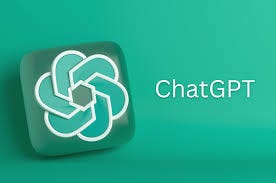Writing SEO Blogs Faster with ChatGPT: A Simple Guide
Blogging is one of the best ways to grow a website, attract organic traffic, and share valuable knowledge. But writing a blog post especially one that is optimized for SEO can take a lot of time and effort. That’s where ChatGPT can help.
ChatGPT is an AI language model that helps users generate human-like text. Whether you’re a student, beginner, or content creator, you can use ChatGPT to write faster and better.

This guide will walk you through everything you need to know to write SEO blogs using ChatGPT from idea generation to publishing your post.
What is ChatGPT?
ChatGPT is a tool developed by OpenAI. It understands text prompts and generates helpful responses. You can use it to brainstorm blog ideas, write articles, summarize content, rewrite for clarity, and even help with SEO tasks.
What is SEO Blogging?
SEO (Search Engine Optimization) blogging means writing blog posts in a way that helps them rank on search engines like Google. The goal is to drive more traffic to your website.
Key Elements of SEO Blogs:
- Keywords: Words and phrases people type in search engines.
- Headings (H1-H6): Proper formatting helps Google understand your content.
- Meta Descriptions: A short summary that appears in search results.
- Internal and External Links: Links to your other pages or helpful outside resources.
- Alt Text: Descriptions of images for SEO and accessibility.
- Mobile Optimization: Making sure your blog works well on phones and tablets.
Why Use ChatGPT for SEO Blogging?
Writing blogs manually can be slow. ChatGPT helps you:
- Save time by generating ideas and drafts quickly
- Avoid writer’s block
- Get help with SEO optimization
- Edit and improve your writing
- Maintain a consistent writing style
Even if you’re not great at English or writing, ChatGPT can give you a strong starting point.
Also Read: From SEO to AI Optimization: How Search is Changing in 2025

Step-by-Step Guide to Write Blogs Using ChatGPT
Step 1: Do Keyword Research
Before writing, you need to know what people are searching for. This is called keyword research.
Tools You Can Use:
- Google Keyword Planner
- Ubersuggest
- AnswerThePublic
- Ahrefs (paid)
- ChatGPT (for ideas)
Prompt Example for ChatGPT:
Suggest long-tail keywords for a blog about “how to study for exams.”
ChatGPT can’t give you search volume, but it can suggest keyword ideas to begin with.
Step 2: Generate Blog Title Ideas
Once you have a keyword, ask ChatGPT to suggest catchy and SEO-friendly titles.
Prompt Example:
Give me 10 SEO-optimized titles for a blog post about “study tips for students.”
Step 3: Create a Blog Outline
An outline helps you organize your blog clearly. ChatGPT can create one for you.
Prompt Example:
Create a detailed blog outline using H2 and H3 headings for a blog titled “Top 10 Study Tips for College Students.”
Step 4: Generate Blog Content
Ask ChatGPT to write blog content section by section. It’s better than generating everything at once.
Click here to read more


Comments
Post a Comment